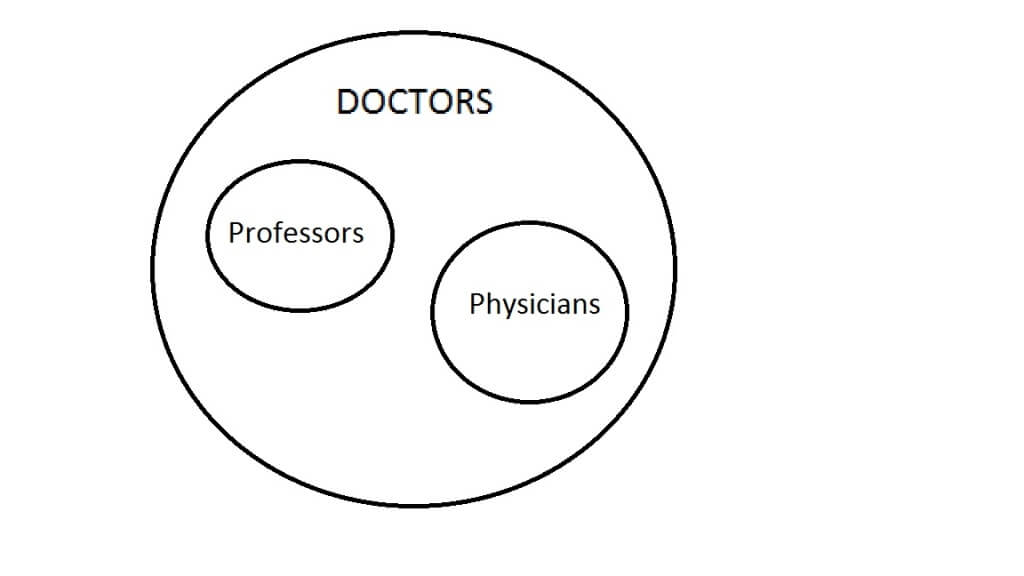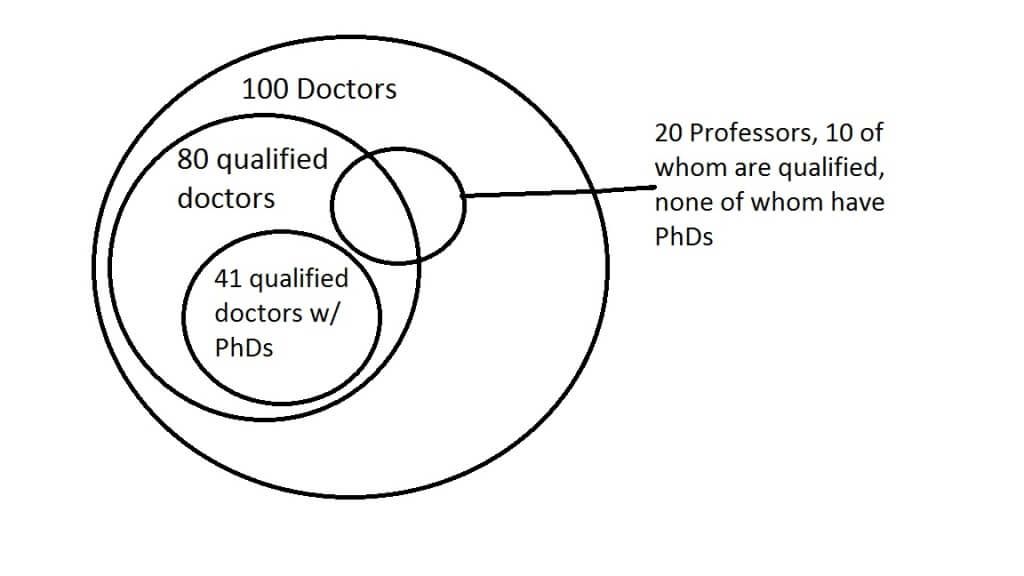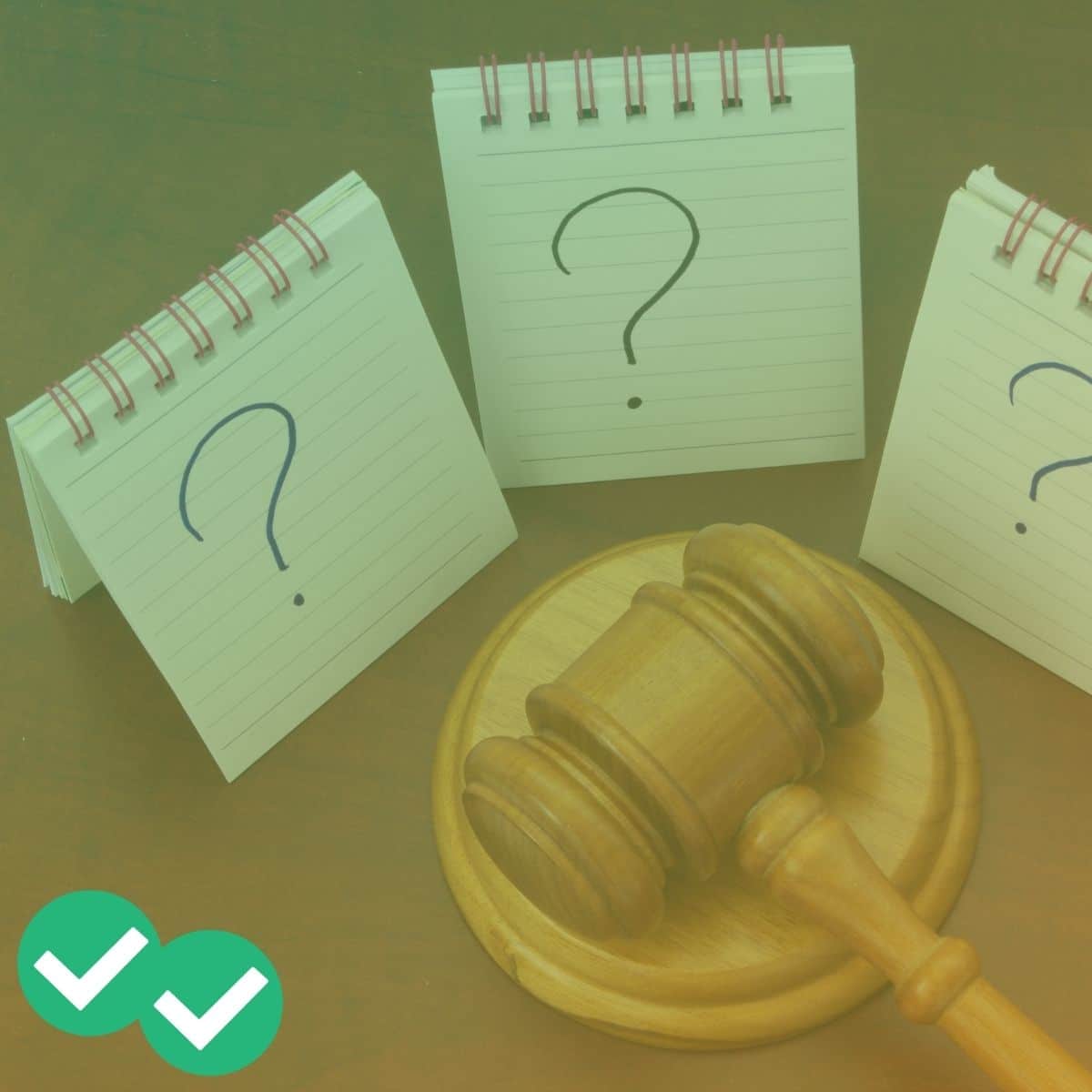
The LSAT Logical Reasoning section is probably the one that you’re most familiar with in everyday life, and it’s also what law school is all about. If you’ve ever tried to convince someone of something and backed up your position with reasoning, then you’ve made an argument before. If you’ve ever read a statement and thought about what was implied based on that statement, then you’ve made logical inferences before.
Here are the LSAT Logical Reasoning basics:
- Logical Reasoning on the LSAT is all about arguments and inferences.
- Each Logical Reasoning section presents you with between 24 to 26 short sets of statements, each followed by a question.
- The questions will revolve around understanding arguments contained in those statements or making inferences based on those statements.
Check out this video with our top tips and strategies for LSAT Logical Reasoning. Then, read on to learn all about this section, including question types and practice problems!
And, for more support on all of the LSAT sections, check our guide to the 2021 LSAT!
Table of Contents
Why is LSAT Logical Reasoning important?
On the traditional LSAT, since there are two Logical Reasoning Sections out of your four scored sections, Logical Reasoning counts for about 50% of your LSAT score. That makes it by far the most important out of the three types of sections on the LSAT test. If you’re weak at Logical Reasoning, it will be difficult to get a great score, no matter how strong you are on the rest of the test.
How can I improve on LSAT Logical Reasoning?
LSAT Logical Reasoning Practice Questions
The best way to improve your logical reasoning skills is to practice them. Try out these LSAT Logical Reasoning practice questions to get started!
If all of the above statements are true, then which one of the following must be true?
A. Any physician that is highly educated is experienced.
B. Most doctors who have PhDs are qualified.
C. Most professors who are qualified have PhDs.
D. Any qualified professor or physician is highly educated.
E. Any professor who is highly educated is a qualified doctor.
Click to show answer and explanation
The Prompt
The prompt tells us that all of the facts provided are true. Even if some of them seem unlikely to you, it doesn’t matter. For this question, we pretend that they are all perfectly accurate.
More importantly, we pretend like we know nothing else about doctors, physicians, or professors. The only information available to us is what’s provided in the stimulus. Our answer must be supportable using that–and only that–information.
So, let’s take a look at the information we’re given and organize it as clearly as possible.
The Stimulus
First, we’re going to tackle the stimulus. Let’s assign some variables to the different characteristics of doctors that are mentioned in the text.
qualified = B
PhD = C
experienced = D
educated = E
We can now rewrite the stimulus as:
All professors and physicians are doctors. Most B doctors have Cs. But if a doctor is not D then he or she is not B, and all D doctors are E.
Let’s organize our facts more clearly by working through the stimulus one phrase at a time, writing out some if/then statements and contrapositives, if possible.
- All professors and physicians are doctors
If/then form: If prof or phys → doctor
Contrapositive: if not doctor → not prof and not phys

Notice how anything that’s true of all doctors will also be true of all physicians and professors. This is important because all of the remaining statements in the stimulus apply to all doctors, and therefore also to all physicians and professors.
Meanwhile, anything that’s true of some or all physicians and/or professors will also be true of at least some doctors. However, something that’s true of some or most doctors will not necessarily be true of any professors or physicians.
The rest of the statements in the stimulus apply to all doctors.
Most qualified doctors have PhDs.
Most Bs have Cs.
If a doctor is inexperienced then he or she is unqualified.
If/then form: If not D → not B
Contrapositive: if B → D
All experienced doctors are highly educated.
If/then form: If D → E
Contrapositive: if not E → not D
Finally, let’s see if we can combine any rules and come up with some deductions.
- The 4th statement (if D → E) can be combined with the contrapositive of the 3rd statement (if B → D) to come up with: If B → D and E
- We can also combine the 3rd statement with the contrapositive of the 4th statement: if not E → not B.
That’s probably about all we can do at this point, so let’s move on to the answer choices.
The Answers
(A) Any physician that is highly educated is experienced.
Using our assigned variables, we can translate this as if E → D. In this statement, E (being highly educated) is the trigger. In other words, it says that if a physician is highly educated, then we definitely know that physician is also experienced.
Unfortunately, the stimulus doesn’t support this. The stimulus tells us that an experienced physician will definitely be highly educated, but not necessarily the other way around. In other words, E (being highly educated) isn’t a trigger in any of our factual statements above. We have not E as a trigger in two different places, but that’s the closest we get. Therefore, this answer choice is not supported by the facts provided.
(B) Most doctors who have PhDs are qualified.
Using our variables, we can translate this as, most Cs are Bs. Again, this is the opposite of what the stimulus tells us. We know that most Bs (qualified doctors) have Cs (PhDs), but we can’t say that the reverse is true.
Here’s an example that illustrates why this answer choice is wrong: we have 100 doctors total. Of the 100, 20 of them are qualified and 90 have PhDs. A total of 18 doctors are qualified and have PhDs. Thus, most of the qualified doctors have PhDs (18 out of 20). However, it isn’t accurate to say that most doctors with PhDs are qualified (only 18 out of 90).
(C) Most professors who are qualified have PhDs.
Using our variables, we can translate this as, most Bs have Cs. This is exactly the same as our statement #2 up above.
However, this statement is about professors, whereas the original was about doctors. Remember that in the diagram above we discovered that something that is true of all doctors is also true of all professors. Unfortunately, it isn’t true that all qualified doctors have PhDs. It’s true that most qualified doctors have PhDs.
Let’s draw out a scenario: We have 20 professors within a group of 100 doctors. 80 of our doctors are qualified and 41 of those 80 have PhDs. Therefore, most of our qualified doctors have PhDs. Is it necessarily true that most of our qualified professors have PhDs? Nope. What if only 10 of our professors are qualified, and none of those professors is among the 41 qualified doctors who have PhDs? That would look something like this:

Thus, we can see how it’s possible to have no qualified professors with PhDs, even within a group of doctors, in which most of the qualified ones have PhDs. Therefore, this answer choice isn’t necessarily true.
(D) Any qualified professor or physician is highly educated.
This is the correct answer choice.
Using our variables, we can translate the statement as if B → E. Looking back at the deductions we made earlier, we discovered that you could combine the 4th statement (if D → E) with the contrapositive of the 3rd statement (if B → D). This gave us the statement, if B → D and E.
That statement is true of all doctors, which means it’s also true of all physicians and all professors. Therefore, this answer choice is fully supported by statements made in the stimulus.
(E) Any professor who is highly educated is a qualified doctor.
We can translate this answer choice as, if E → B. Again, this answer uses E as a trigger, and as we discovered in the first answer choice, we have no statement in the stimulus that uses E as a trigger. Therefore, this is an unsupportable statement. We don’t even need to worry about comparing professors and doctors in this case.
Ready to go one step further and put your LSAT skills to the test? Check out our free full-length LSAT practice test. Just click below to get started!
4 Tips to Master LSAT Logical Reasoning
Keep these points in mind when studying for Logical Reasoning and you’re bound to improve your score.
1. Master the different question types.
Identifying the LSAT Logical Reasoning question type is essential when determining how to approach the question. Here are the most common Logical Reasoning question types:
- Flaw Questions ask you to spot the underlying flaw in the argument presented.
- Assumption Questions ask you to identify the gap between the evidence provided and the conclusion reached. The right answer choice will be the statement that is necessary to get from the evidence to the conclusion.
- Inference Questions ask you to find the statement that is most supported by the argument, assuming all the statements in the argument are true.
- Strengthen Questions ask you to recognize the statement that would best bolster the author’s argument and support the conclusion.
- Weaken Questions ask you to spot the statement that would most detract from the author’s evidence in support of the conclusion.
- Paradox Questions ask you to note the answer choice with the most similar argument structure to the one in the argument.
- Principle Questions ask you to choose the answer choice that is an example of the idea, or principle, presented in the argument.
Naturally, your approach will differ depending on the type of question you are answering. So, be sure to familiarize yourself with the most common Logical Reasoning question types and practice doing sets of them until you feel comfortable with your approach.
2. Read the stimulus carefully.
- Practice active reading
Just like when you’re reading a passage in the Reading Comprehension section, you’ll want to read Logical Reasoning stimuluses actively. This is not a leisurely read—dissect the argument and understand how all of the sentences work together. Never skim, and always go back to reread when you don’t understand what you just read.
- Identify the conclusion and premise
On any question that involves an argument, you must correctly identify the conclusion to the argument and the premise(s). Note that the conclusion isn’t necessarily at the end of the argument. Be on the lookout for keywords that signal the conclusion, such as “thus,” “therefore,” and “hence.” Similarly, look out for words that indicate a premise, such as “since,” “because,” and “for.”
- Recognize important keywords
Certain words on the LSAT are especially important because they have precise meanings that the LSAT likes to test. This includes conditional language like “only if,” “unless,” and “the only,” as well as quantity words like “some,” “most,” and “not all.” Make sure you know what these words mean and always recognize them when you see them in a Logical Reasoning stimulus.
3. Predict the answer.
If you read the stimulus carefully and understand what the question is asking, you can often anticipate what the correct answer should do. While you can’t predict the exact wording of the correct answer, you can often recognize what issue the correct answer should relate to or what connections the correct answer should rely on. For example, if the stimulus says that A leads to B, and B leads to C, and the question asks us what must be true on the basis of those statements, then you know the correct answer is likely going to be that A leads to C, or some rewording of that idea.
Taking time to think critically about the stimulus and the question before going to the answers is the key to solving questions quickly and accurately.
4. Practice pacing and time management
Most of the difficulty on the LSAT springs not only from the questions, but the fact that your time is so limited. 35 minutes is either not enough time or just enough time to completely answer the 24-26 questions you’ll find on the Logical Reasoning section. Here are some ways to get faster at LSAT Logical Reasoning and use your time efficiently:
- Time yourself during practice, so you get used to working calmly under time pressure. Resist the urge to rush through the section while making careless errors.
- Know your pacing strategy: What is your goal score, and how many questions will you need to answer to get there? Is Logical Reasoning your strongest or weakest section? If it’s your strongest, you’ll want to answer as many questions as possible.
- Practice diagramming every day: You might lose a lot of time if your diagramming foundations are shaky. Difficult questions on the Logical Reasoning section will often use paraphrasing to confuse you about conditional chains. Be ready to summarize terms efficiently using initials and to recognize contrapositives.
- For more on this topic, check out our free video lesson on if/then statements and contrapositives.
- Avoid getting stuck: A lot of time can be lost if you get stuck on difficult questions. To avoid these traps, trust your gut when you initially choose an answer, then flag the question to return to. If you have time by the end of the section, then you can re-examine flagged questions and answer choices.
Breakdown of LSAT Logical Reasoning Question Types
Now that you know a little more about what to expect with the LSAT Logical Reasoning section, let’s dive into what you’ll need to know and do for each question type.
| Question Type | Identifying language in the prompt: | Correct answer choice will: |
|---|---|---|
| Assumption | “assumption” or “to assume” | identify a gap between the premises (evidence) and conclusion |
| Strengthen | “strengthen the conclusion…” or “provides the most support for the conclusion…” | fill in a gap between the premises (evidence) and conclusion |
| Weaken | “weaken,” “undermine,” “call into question,” etc… | create or widen the gap between the premises and conclusion to make a potentially valid conclusion less convincing |
| Flaw | “most vulnerable to criticism,” “flawed,” “reasoning error,” etc. | identify a truth that is not explicitly stated but can be deduced solely from the information provided |
| Inference | “most supported by the statements above,” “must also be true,” “properly inferred from,” “completes the argument” | identify a truth that is not explicitly stated but can be deduced solely from the information provided |
| Principle > Scenario | “principle” or “proposition” (principle is stated in the stimulus) | describe a scenario in which the principle stated in the stimulus is applied logically and accurately |
| Scenario > Principle | “principle” or “proposition” (principles are stated in the answer choices) | describe a principle that justifies the argument or decision in the stimulus |
| Paradox | “explain,” “resolve,” “contradiction,” “discrepancy,” “helps to account for” | provide a reasonable explanation of an apparent contradiction |
| Parallel Reasoning | “pattern of reasoning most similar to…” or “most similar in reasoning to…” or “most closely resembles…” | describe a scenario guided by the same logic as the scenario in the stimulus |
| Parallel Flaw | “same pattern of flawed reasoning…” or “most similar to the flawed reasoning in…” | describe a scenario guided by the same faulty logic as the scenario in the stimulus |
| Method of Argument | “argument proceeds by…” or “describes the manner in which…” or “describes the argumentative technique…” | describe the rhetorical strategy of all or part of the stimulus |
| Role of Statement | “most accurately describes the role played in the argument by…” | describe a question, the answer to which would allow you to say whether the conclusion in the stimulus is valid |
| Evaluate Conclusion | “evaluate,” “useful to know,” “helpful to know in order to…” | describe a question, the answer to which would allow you to say whether the conclusion in the stimulus is valid |
| Point of Contention | “disagree,” “point at issue” | identify the precise point on which two speakers disagree |
| Point of Agreement | “agree” | identify the precise point on which two speakers agree |
| Main Idea | “states the overall conclusion” or “expresses the main conclusion” | identify the conclusion of the argument |
Click the arrow next to each question type below to learn more about it!
Click to show more on Assumption questions
Assumption Questions
Assumption questions require you to identify the gap between the evidence presented and the conclusion drawn. In other words, you need to find some piece of information that isn’t provided but that is necessary to connect the evidence to the conclusion.
Click to show more on Strengthen and Weaken questions
Strengthen and Weaken Questions
Strengthen and Weaken questions are just variations on the Assumption theme. Strengthen questions ask for a piece of information that isn’t provided, but that reinforces the connection between the evidence and the conclusion. Weaken questions want new information that damages that connection.
Click to show more on Flaw questions
Flaw Questions
Flaw questions involve logically flawed arguments. In other words, these are arguments in which the conclusion does not have to follow from the premises because the argument is overlooking something or assuming something. These questions ask us to identify exactly why the conclusion doesn’t follow.
Click to show more on Inference questions
Inference Questions
Inference questions are asking you to look at the information provided and determine something new that can be concluded based exclusively on that information. Inference questions are all about close reading. In short, close reading means paying attention to and treating each word as uniquely important to the text. Even more simply put, every word counts.
Click to show more on Main Idea and Conclusion questions
Main Idea/Conclusion Questions
Main Points/Conclusion questions are simple: identify the conclusion of the argument. What is the statement that the argument is trying to support? Identifying the conclusion of an argument is one of the fundamental skills in logical reasoning, so it’s important to master this question type.
Click to show more on Paradox questions
Paradox Questions
Paradox questions present you with a set of facts that seem to be contradictory. Your job is to identify the answer that helps to explain why that apparent discrepancy could make sense.
Click to show more on Parallel Reasoning questions
Parallel Reasoning Questions
Parallel Reasoning questions require us to recognize the reasoning structure of an argument in the stimulus and to identify an answer choice that uses the same reasoning structure. These questions often involve conditional reasoning, which is why strong diagramming skills can help. Many students find these questions among the most difficult and time-consuming on the Logical Reasoning section.
Click to show more on Parallel Flaw questions
Parallel Flaw Questions
Parallel Flaw questions are just like Parallel Reasoning questions, except now the argument in the stimulus is guaranteed to be flawed. Your job is to pick the answer that contains an argument that is flawed in the same way.
Click to show more on Principle questions
Principle Questions
In Principle Questions, the stimulus will contain one or more principles, which are also known as rules. You’ll be asked to identify the answer that conforms to those rules. The wrong answers might contradict those rules or be about situations to which the rules do not apply.
Click to show more on Method of Argument questions
Method of Argument Questions
In Method of Argument questions, you’re asked how the argument reaches its conclusion. In other words, what’s the argumentative technique? Perhaps the argument relies on a sample, or draws a distinction, or brings up a counterexample. Although there aren’t many Method of Argument questions on each test, mastering them can help on other question types, since recognizing the way the argument reaches its conclusion can help you identify the argument’s assumptions.
Click to show more on Role of Statement questions
Role of Statement Questions
These questions will specify a particular statement in the stimulus and ask us to identify the role of that statement. If that statement is part of an argument, then we’ll have to identify whether it’s the main conclusion, intermediate conclusion, or a premise. Sometimes, however, that statement might be playing a different role, such as acting as a concession, or a fact to be explained. Or perhaps the statement is part of an opposing viewpoint. Solving Role questions requires precise reading and dissecting of the Logical Reasoning stimulus.
Click to show more on Evaluate the Conclusion questions
Evaluate the Conclusion Questions
Evaluate questions ask us to identify the answer containing an issue that would be the most helpful to evaluating the strength of the argument. These are very similar to Strengthen and Weaken questions, since the issue in the correct answer will be one that either Strengthens the argument or Weakens the argument, depending on how that issue is resolved. Put another way, in Evaluate questions, you should think about what’s missing from the argument—what issue hasn’t been addressed in the stimulus but would be helpful to know in order to reach the conclusion?
Click to show more on Point of Contention questions
Point of Contention Questions
Point of Contention questions, sometimes known as Disagree questions, present you with two speakers who each have their own set of statements. Your job is to identify a point of disagreement between the speakers. The correct answer will be the one for which one speaker agrees with what the answer says, but the other speaker disagrees with it. This question type can often seem like a mix of other ones, since you may have to identify assumptions in each speaker’s statements in order to recognize what they disagree about.
Click to show more on Point of Agreement questions
Point of Agreement Questions
These questions are very similar to Point of Contention questions. Now, your job is to identify an answer that the two speakers agree about. Both speakers will agree with what the correct answer says.
Conclusion: LSAT Logical Reasoning
We hope this guide helped give you a better understanding of how to approach LSAT Logical Reasoning, what question types to expect, and what ways you can practice for success. There’s a lot to go over here, so don’t worry if you need to come back to this guide a few times to reference the information. Happy studying! 🙂






